When to harvest potatoes and how to do it: get it right with our advice
We explain when to harvest potatoes and the best approach to do it so you can enjoy these crops at their tastiest
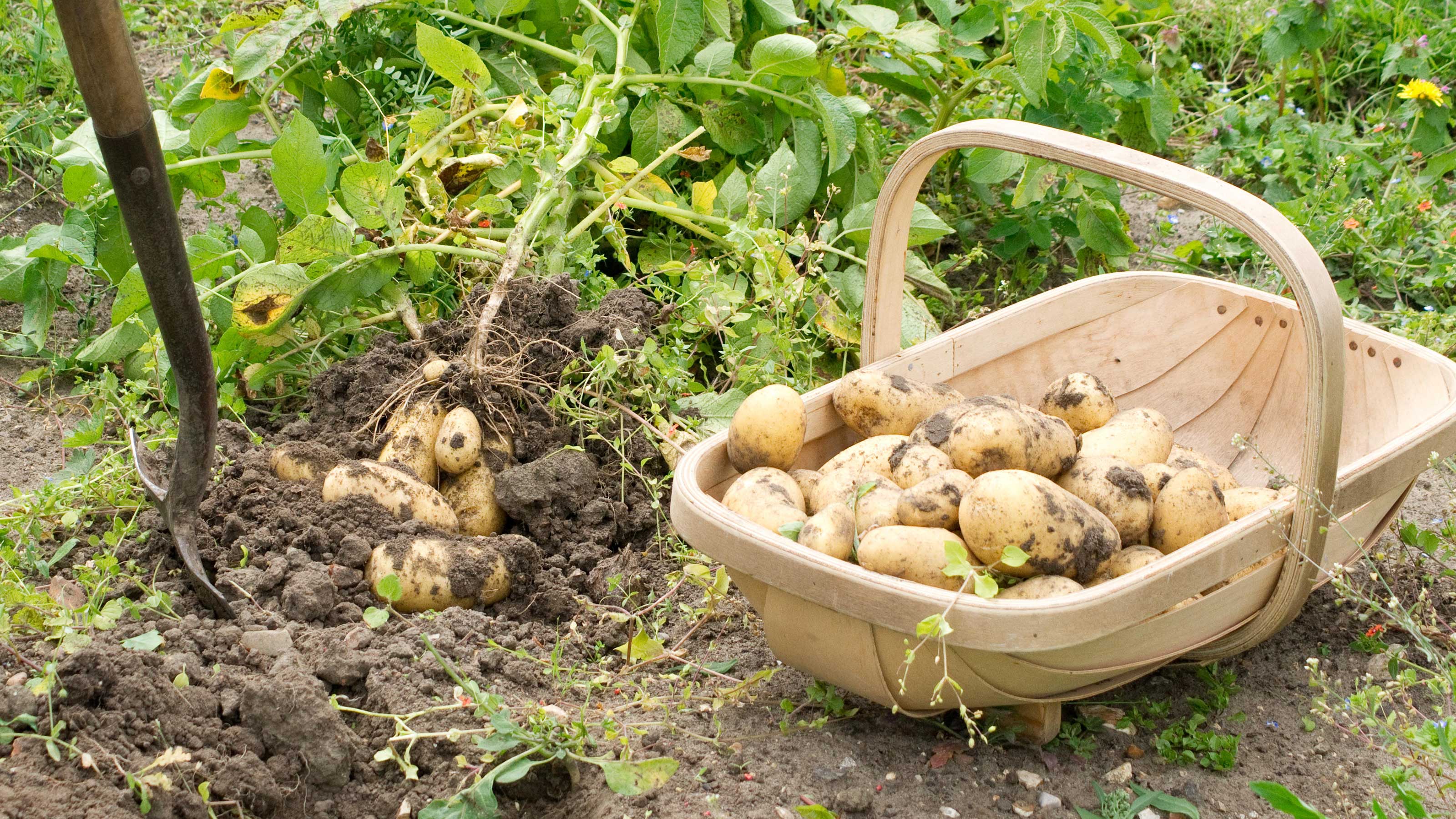

Anna K. Cottrell
To get the best crop, our tips on when to harvest potatoes and how, exactly, to do it will definitely come in handy. After all, once you've put in the hard work learning how to grow potatoes, you won't want them to go to waste by picking them at the wrong time, or with the wrong methods.
So, whether you're growing them for mash, chips, or for boiling and slicing into a BBQ salad, with our advice, you can ensure the biggest yield of tasty spuds. And we've included info on how to store them too, so you can enjoy them for weeks – even months – after digging them up.
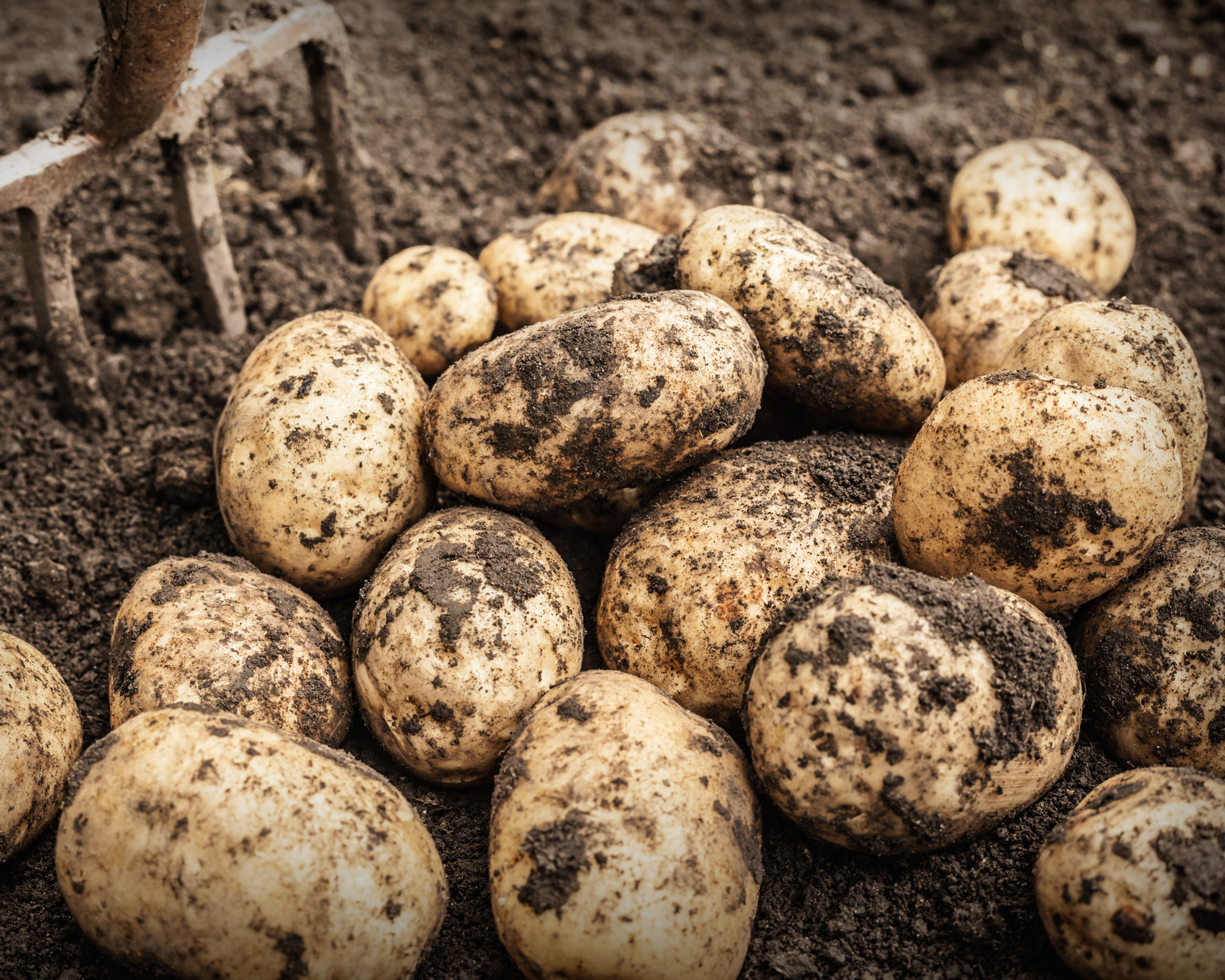
Homegrown spuds are a satisfying crop to dig up
When to harvest potatoes
When to harvest potatoes depends somewhat on the variety you have chosen to grow.
There are three types of potatoes: first earlies (or 'new' potatoes), second earlies, and maincrops. New potatoes provide rapid, yet smaller, harvests, explains Bob Flowerdew, an organic gardening expert from Amateur Gardening magazine, and are most commonly eaten freshly harvested, a couple of months after they're sown. Second earlies produce a heavier yield but take a little longer, he continues. Dig them up as the leaves die down – most can be stored quite well.
Maincrop potatoes are generally best for storing and produce the highest yields if they're kept growing until early fall and potato blight is avoided.
In a YouTube video on his channel, Gardener Scott praises the benefits of harvesting as close to the end of the potato season as possible. Wait until the foliage turns yellow, advises the RHS – you can then cut it back and remove it before harvesting your spuds.
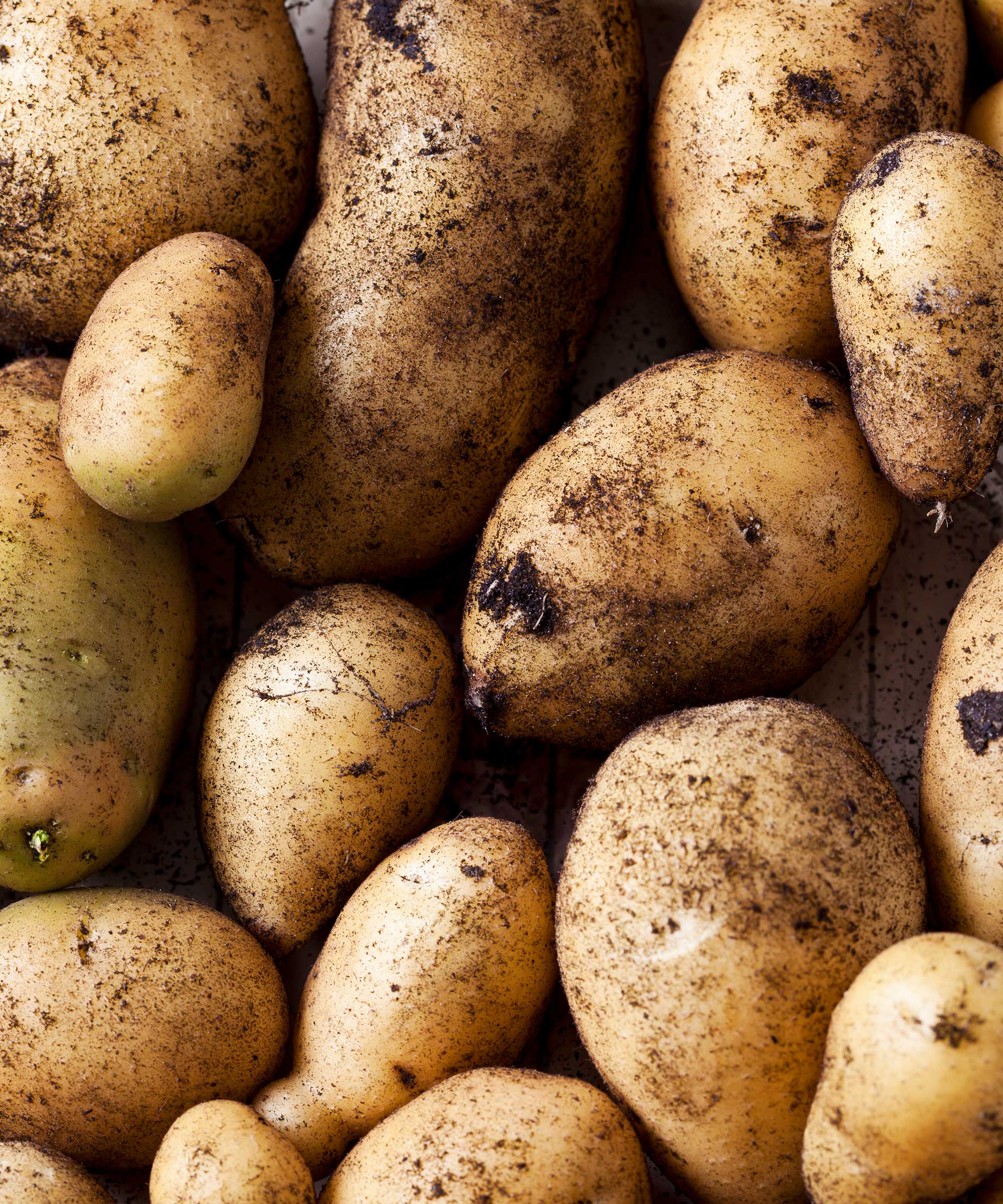
Wait until the end of the growing season for the biggest possible potato harvest
How to harvest potatoes
'Of course, a crop of perfect potatoes stores better than damaged ones,' Bob says, 'but what also matters is their moisture content and how tough their skins are.'
He goes on to explain that potatoes that have high water content – from heavy rain or late watering – don't store as well as crops grown in drier conditions.
Because of this, Bob says to stop watering the plants for a couple of weeks in your kitchen garden before you plan to lift your potatoes. You can even go so far as to protect them from any rain with plastic sheets, he adds.
This starts the process known as 'curing', explains Gardener Scott. It 'makes the harvesting process easier on the tuber,' as it's less likely to damage it.
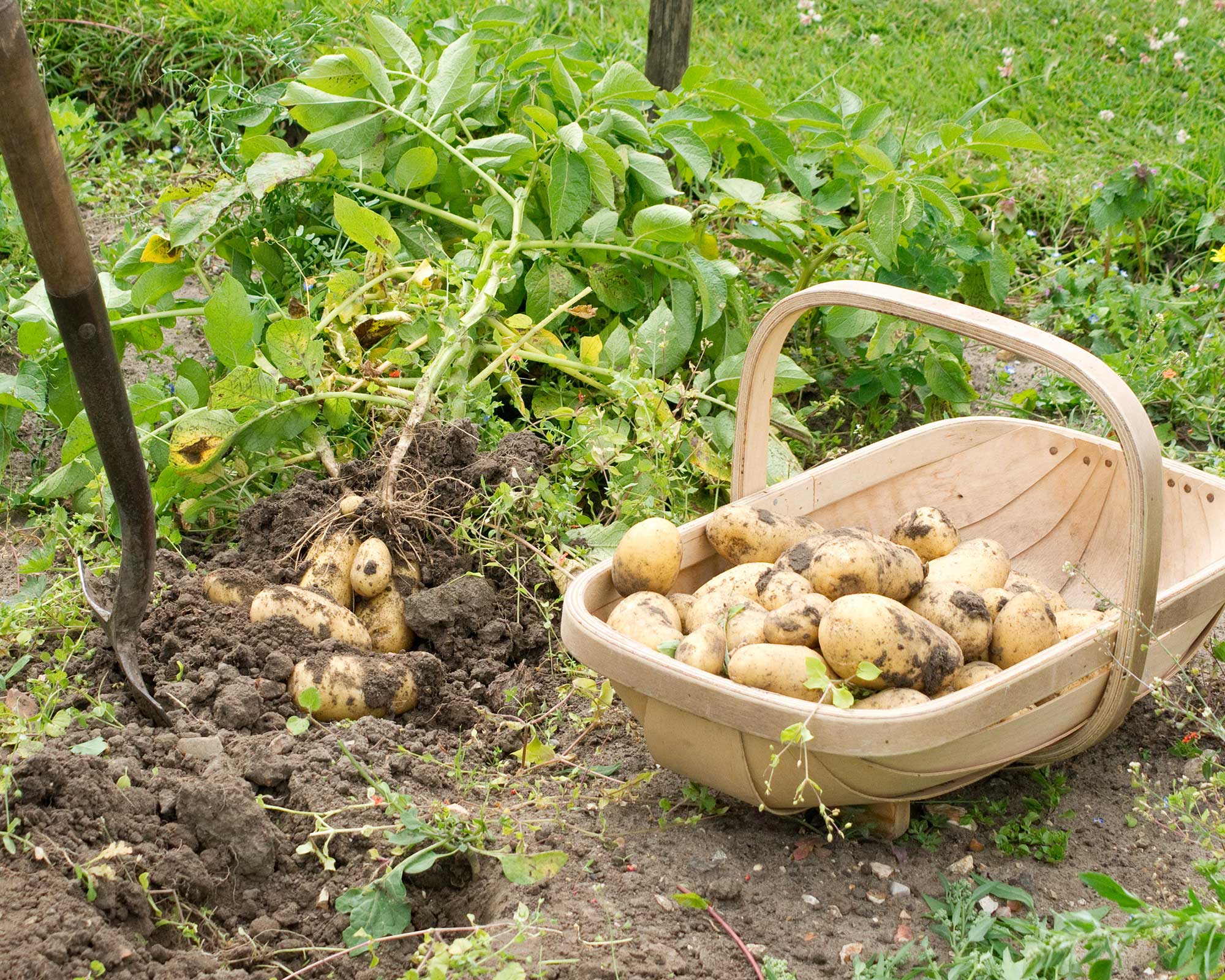
Potatoes grown in drier conditions towards harvest time are best for storage
Using a garden fork, dig up the potatoes on a dry day that's sunny and breezy, Bob advises.
Scott recommends taking extra care when harvesting your potatoes from a raised garden bed rather than a bag. With a bag, it's very simple – you just tip it over and find all your tubers.
When harvesting from a bed, Scott urges gardeners to start at the edge – otherwise, you're more likely to poke through the tubers with your garden fork. 'If I start at the edge and just pry up the soil, I'm less likely to damage the potatoes,' he says.
The other difference with harvesting from a bed is that because it's deeper than a bag, you may miss some potatoes the first time you go through the soil. Scott explains how he comes back and does a second turnover to find any tubers that weren't found the first time. 'It takes a couple of times going through the bed to get all of the potatoes,' he says.
Once you've collected your potatoes, leave them lying on the ground in the sun for a couple of hours to firm up their skins and dry off any moisture, Bob advises.
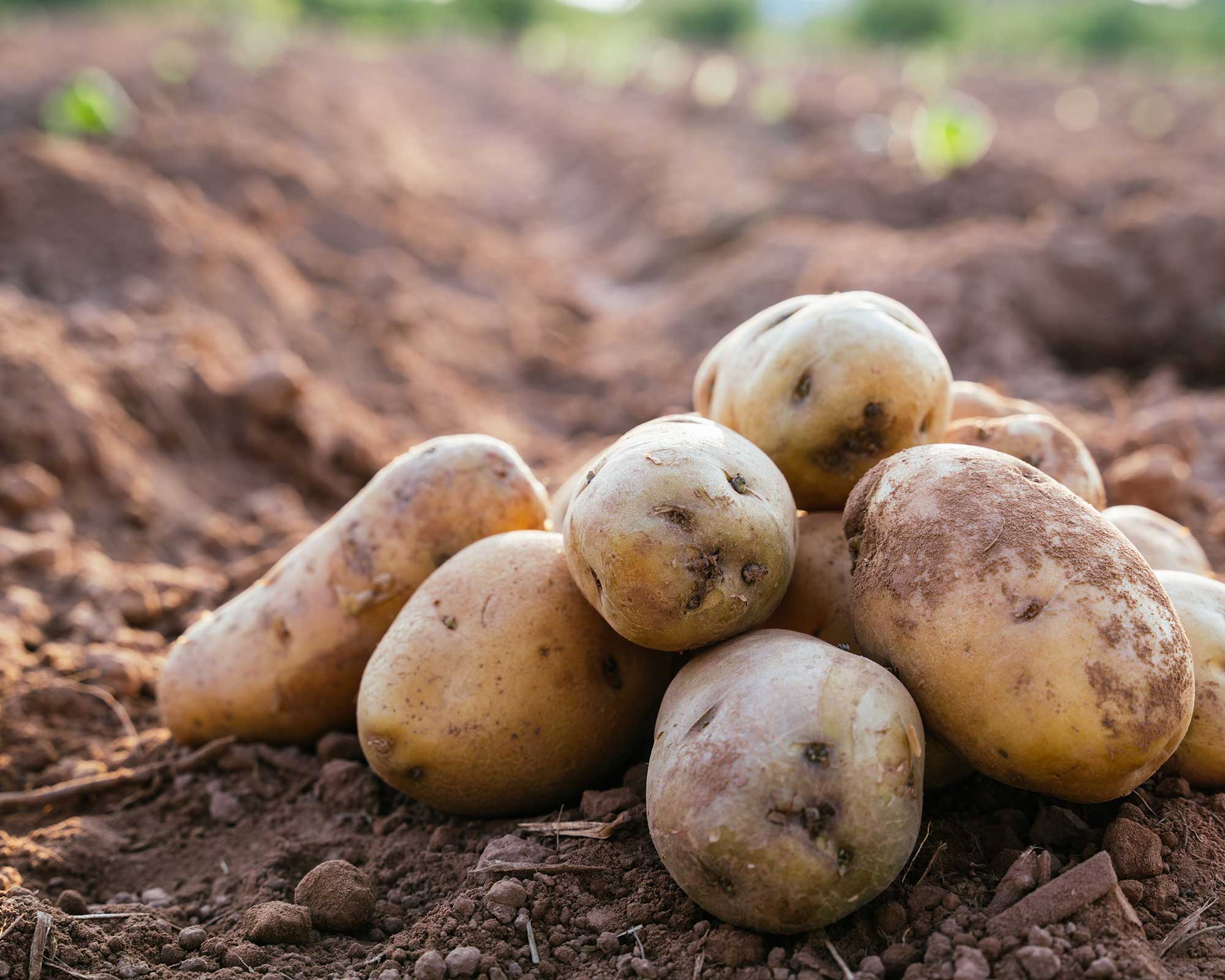
Allow your potatoes to dry out on the ground for a couple of hours after digging them up
How to store potatoes
Once you've learned when to harvest potatoes and the best method to do so, you'll want to know how to store them safely, too, so you can enjoy them for longer.
Pick the best potatoes from your harvest to store. The others are better to be eaten sooner, as long as they're not green (green potatoes are poisonous).
Bob recommends using thick paper or hessian sacks in a cool, dark place for potato storage. Leave the sacks open for two weeks or more to enable them to dry out even more. If the conditions are right, they can last up to two months, sometimes longer, although check them regularly for softness, sprouting, or signs of rot, discarding any that are past their best.
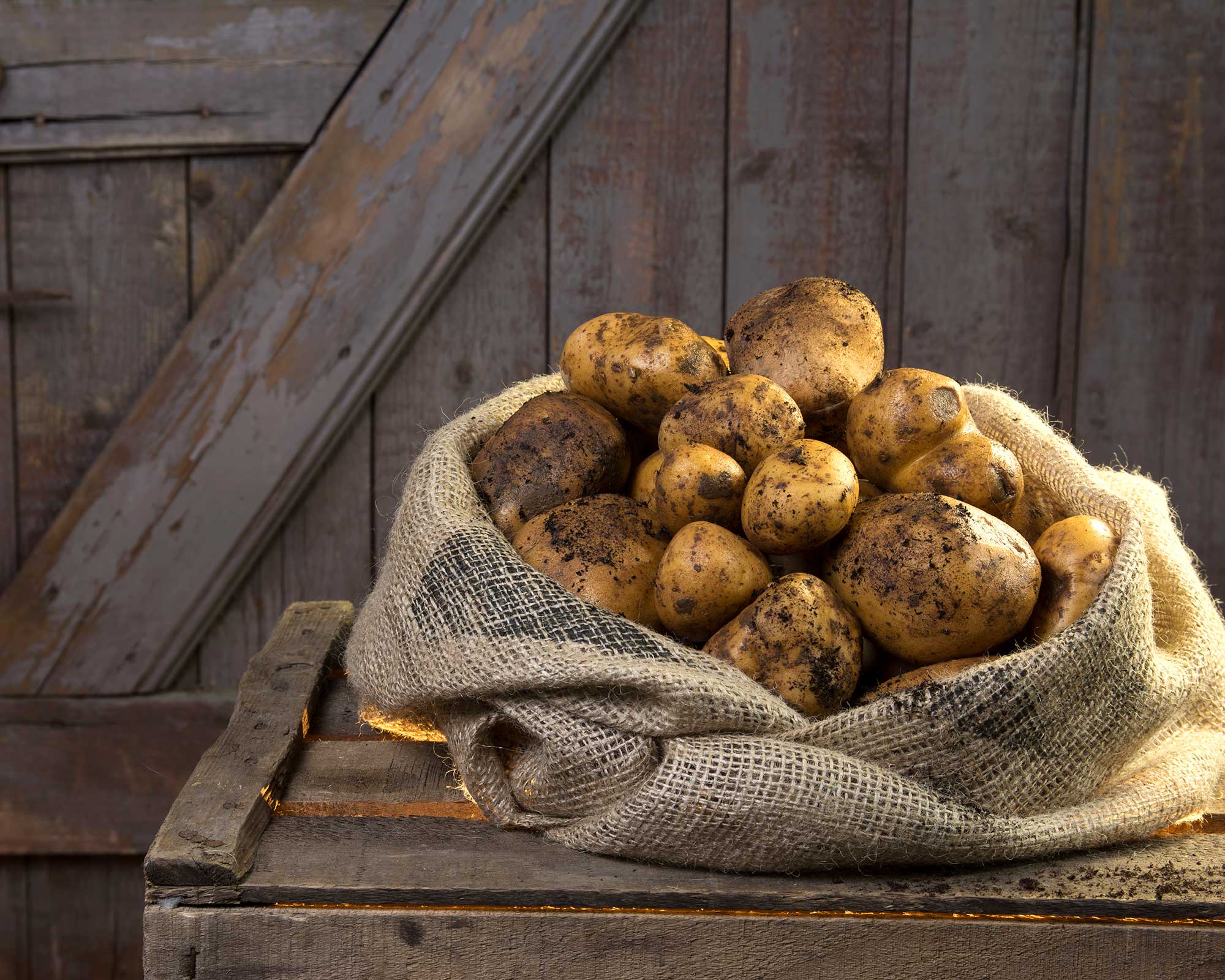
Potatoes should be stored in a cool, dark place
What happens if you pick potatoes too early?
You might be tempted to harvest your potatoes earlier, but there's a reason for waiting.
Scott says, 'if you harvest early, just after flowering, you're gonna get some very small potatoes. But if you wait until the very end of the season like I am, you're likely to get the biggest potatoes possible.'
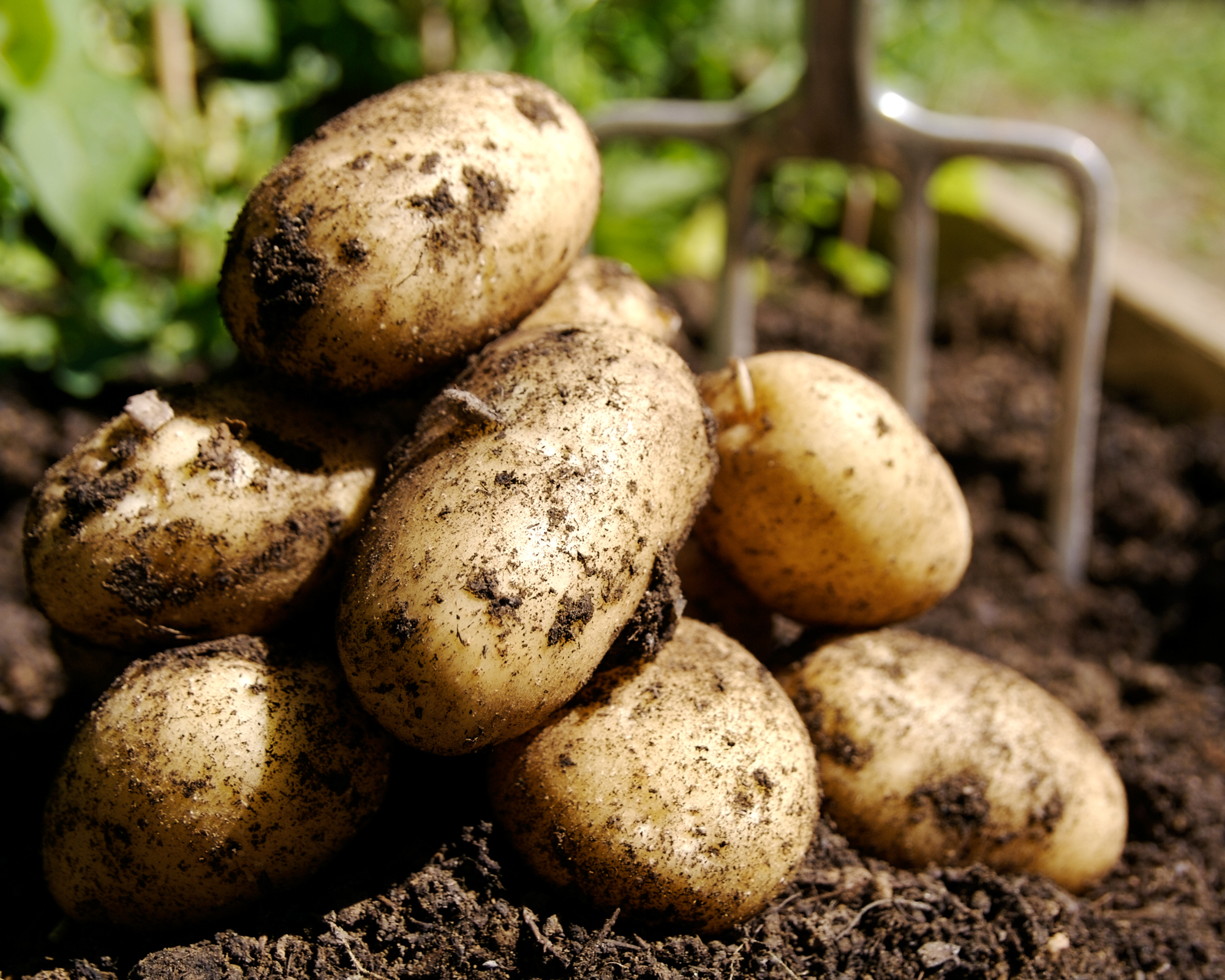
Be patient when it comes to harvesting your potatoes – too soon and you'll only get small yields and spuds
Can you leave potatoes in the ground for too long?
Storing potatoes in the ground is possible to some extent – especially if you use the curing process mentioned above – but don't leave them there for too long. Once temperatures drop and frosts or heavy rain move in, the tubers can start to rot and become damaged.
As a general rule, try to lift them no more than two weeks after the foliage has turned yellow – whether you're growing your potatoes in containers or in the ground.

The garden was always a big part of Holly's life growing up, as was the surrounding New Forest where she lived. Her appreciation for the great outdoors has only grown since then. She's been an allotment keeper, a professional gardener, and a botanical illustrator – plants are her passion.
